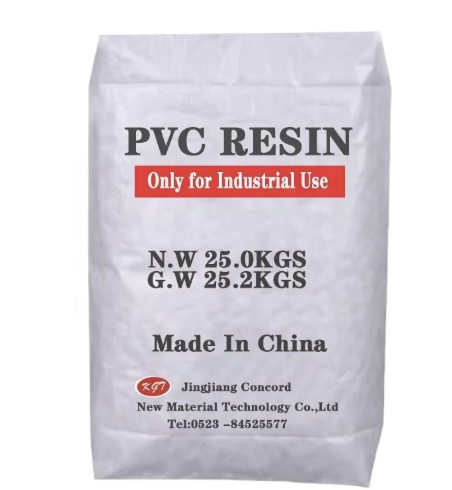Understanding the Fundamental Role of Plasticizers in PVC Processing
The process of PVC gelation represents a crucial aspect of polymer processing that fundamentally transforms polyvinyl chloride from its raw state into useful products. At the heart of this transformation lies the critical role of plasticizers, which serve as essential additives that modify the physical and chemical properties of PVC materials. When manufacturers introduce plasticizers into PVC compounds, they initiate a complex series of interactions that ultimately determine the quality, durability, and functionality of the final product.
The relationship between plasticizers and PVC gelation is intricate and multifaceted, involving molecular-level changes that occur during processing. These interactions begin when the plasticizer molecules start to penetrate the PVC particles, leading to a softening effect that enables proper fusion and the development of the desired material properties. Understanding this relationship is essential for achieving optimal processing conditions and ensuring high-quality end products.
The Science Behind Plasticizer-PVC Interactions
Molecular Mechanisms of Plasticizer Integration
At the molecular level, plasticizers work by positioning themselves between the polymer chains of PVC. This interaction reduces the strong intermolecular forces that typically make PVC rigid and brittle. The plasticizer molecules essentially act as molecular lubricants, increasing the free volume between polymer chains and enhancing their mobility. This increased mobility results in a more flexible and processable material.
The efficiency of plasticizer integration depends heavily on the chemical compatibility between the plasticizer and PVC. Optimal compatibility ensures uniform distribution throughout the polymer matrix, leading to consistent material properties. The rate and extent of plasticizer absorption significantly influence the gelation process and the final product characteristics.
Temperature-Dependent Behavior During Processing
Temperature plays a crucial role in the interaction between plasticizers and PVC during gelation. As the temperature increases during processing, the polymer chains become more mobile, facilitating better plasticizer penetration. The combination of heat and mechanical shear forces promotes the dissolution of PVC particles in the plasticizer, leading to the formation of a homogeneous structure.
The gelation temperature range is particularly important, as it determines the processing window within which optimal fusion can occur. Different plasticizers can significantly affect this temperature range, making it essential to select the appropriate type and concentration for specific applications.
Effects of Plasticizer Type and Concentration
Impact of Different Plasticizer Classes
The chemical structure and properties of different plasticizer types significantly influence their effectiveness in PVC gelation. Phthalate-based plasticizers have traditionally been the most widely used due to their excellent compatibility with PVC and cost-effectiveness. However, alternative plasticizers such as citrates, adipates, and bio-based options are gaining prominence due to environmental and regulatory considerations.
Each plasticizer class brings unique characteristics to the gelation process. Some may promote faster fusion rates, while others might offer better long-term stability or improved low-temperature performance. The selection of the appropriate plasticizer type must consider both processing requirements and end-use specifications.
Concentration Effects on Material Properties
The concentration of plasticizer in PVC formulations directly affects both processing behavior and final product properties. Higher plasticizer levels generally result in lower processing temperatures and faster gelation rates. However, excessive plasticizer content can lead to migration issues and reduced mechanical properties.
Finding the optimal plasticizer concentration requires balancing various factors including processing efficiency, product performance requirements, and cost considerations. The relationship between concentration and properties is often non-linear, necessitating careful formulation optimization.
Processing Parameters and Optimization
Critical Processing Variables
Successful PVC gelation requires careful control of several processing parameters. Temperature, shear rate, and processing time must be optimized based on the specific plasticizer system being used. These variables directly influence the rate and uniformity of plasticizer incorporation, affecting both processing efficiency and product quality.
The processing equipment configuration also plays a vital role in achieving optimal gelation. Factors such as screw design in extruders or mixer blade configuration in internal mixers must be matched to the plasticizer-PVC system's requirements for effective processing.
Quality Control and Testing Methods
Monitoring and controlling the gelation process requires appropriate testing methods and quality control procedures. Techniques such as torque rheometry, differential scanning calorimetry, and visual assessment of fusion levels help ensure consistent product quality. Regular testing of physical properties such as hardness, tensile strength, and elongation provides feedback on the effectiveness of plasticizer incorporation.
Modern processing facilities often employ inline monitoring systems to track gelation progress in real-time, allowing for immediate adjustments to processing parameters when necessary. This capability helps maintain consistent product quality while optimizing production efficiency.

Future Trends and Innovations
Sustainable Plasticizer Solutions
The PVC industry is increasingly focusing on developing sustainable plasticizer alternatives that maintain or improve upon traditional performance characteristics. Bio-based plasticizers derived from renewable resources are gaining attention as environmentally friendly options. These innovations aim to address both regulatory requirements and growing market demand for sustainable materials.
Research continues into novel plasticizer chemistries that offer improved performance while meeting stringent environmental and safety standards. The development of new additives that enhance plasticizer efficiency or provide additional functional benefits represents an active area of innovation.
Advanced Processing Technologies
Emerging technologies are revolutionizing how manufacturers approach PVC gelation. Advanced process control systems utilizing artificial intelligence and machine learning are enabling more precise control over the gelation process. These systems can automatically adjust processing parameters based on real-time measurements, ensuring optimal plasticizer incorporation and product quality.
New equipment designs and processing techniques are also being developed to improve energy efficiency and reduce processing times while maintaining or enhancing product quality. These advances are particularly important as the industry moves toward more sustainable manufacturing practices.
Frequently Asked Questions
How does plasticizer content affect PVC processing temperature?
Higher plasticizer content typically reduces the processing temperature required for PVC gelation. This relationship occurs because plasticizers lower the glass transition temperature of PVC, making the material more processable at lower temperatures. However, the optimal processing temperature must be carefully balanced to ensure complete gelation while avoiding material degradation.
What are the signs of insufficient PVC gelation?
Insufficient PVC gelation can manifest as poor surface finish, reduced physical properties, and inconsistent material behavior. Visual indicators include a matte or rough surface appearance, while mechanical testing may reveal lower than expected strength and flexibility. These issues often result from inadequate plasticizer incorporation or suboptimal processing conditions.
Can plasticizer migration be prevented in PVC products?
While plasticizer migration cannot be completely eliminated, it can be significantly reduced through proper formulation and processing techniques. Using high-molecular-weight plasticizers, polymeric plasticizers, or specialized retention additives can help minimize migration. Additionally, ensuring proper gelation during processing creates a more stable network structure that better retains the plasticizer.

